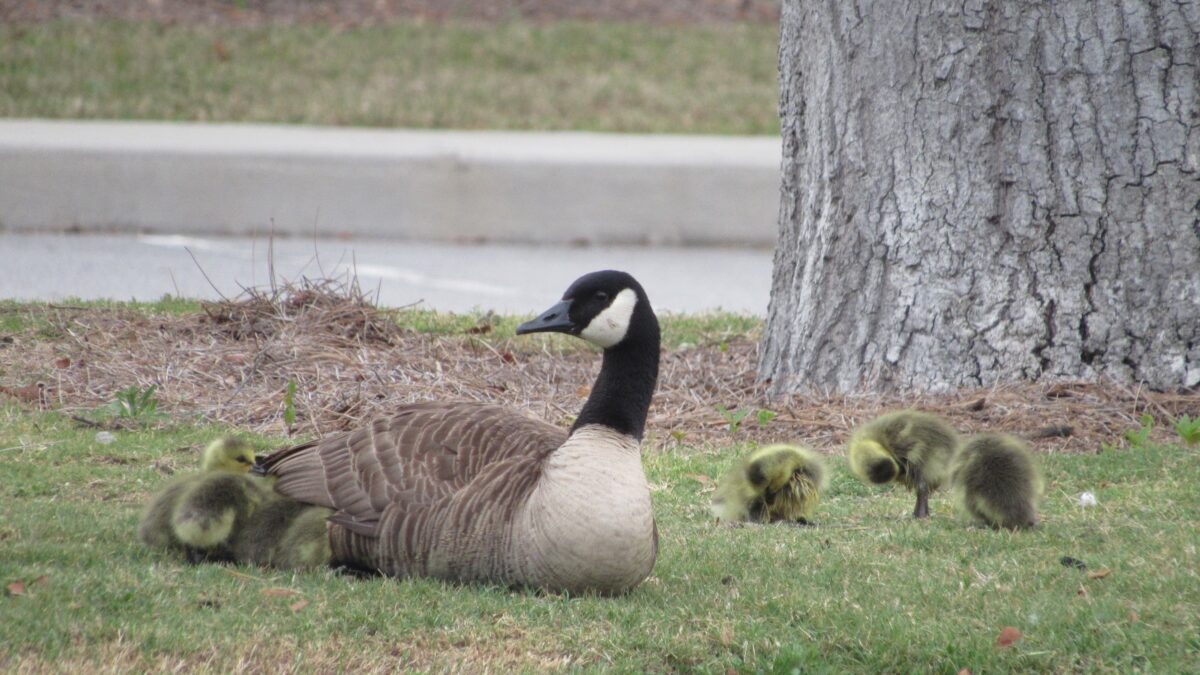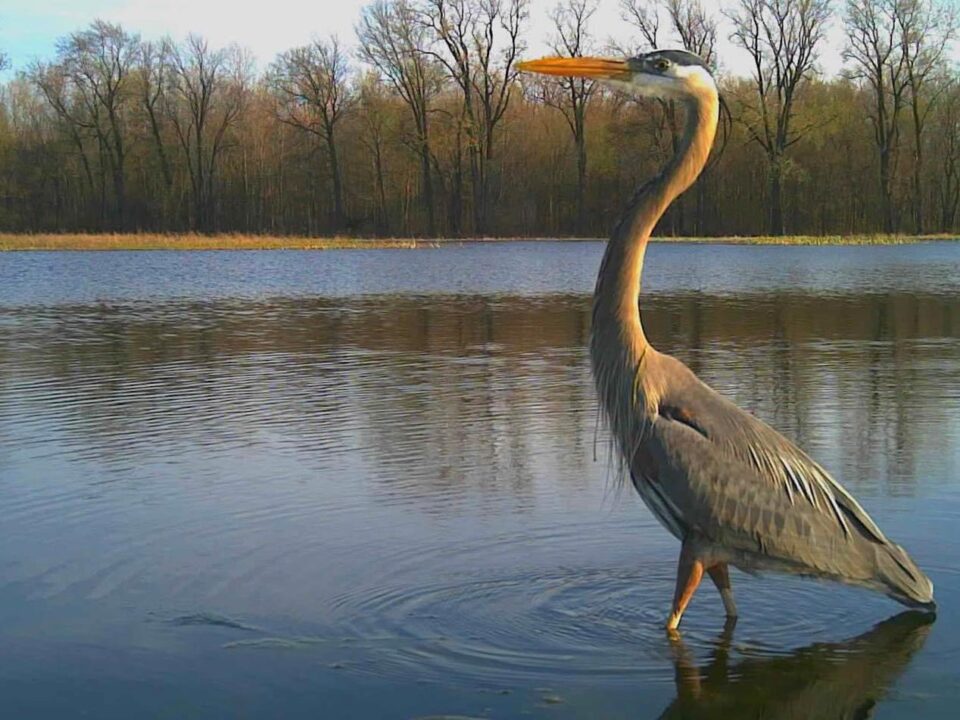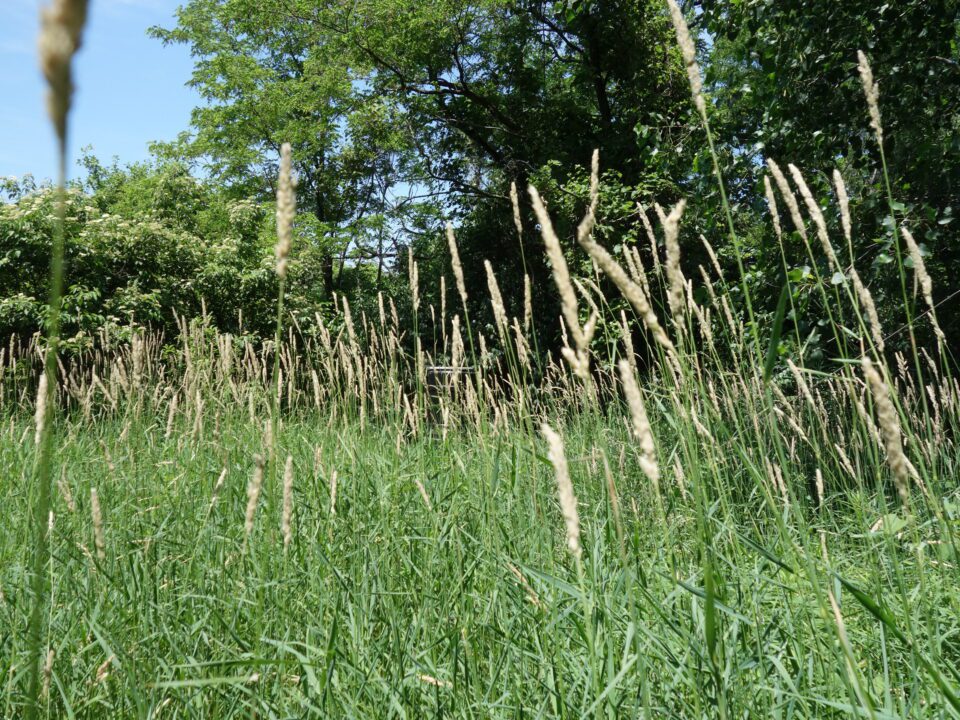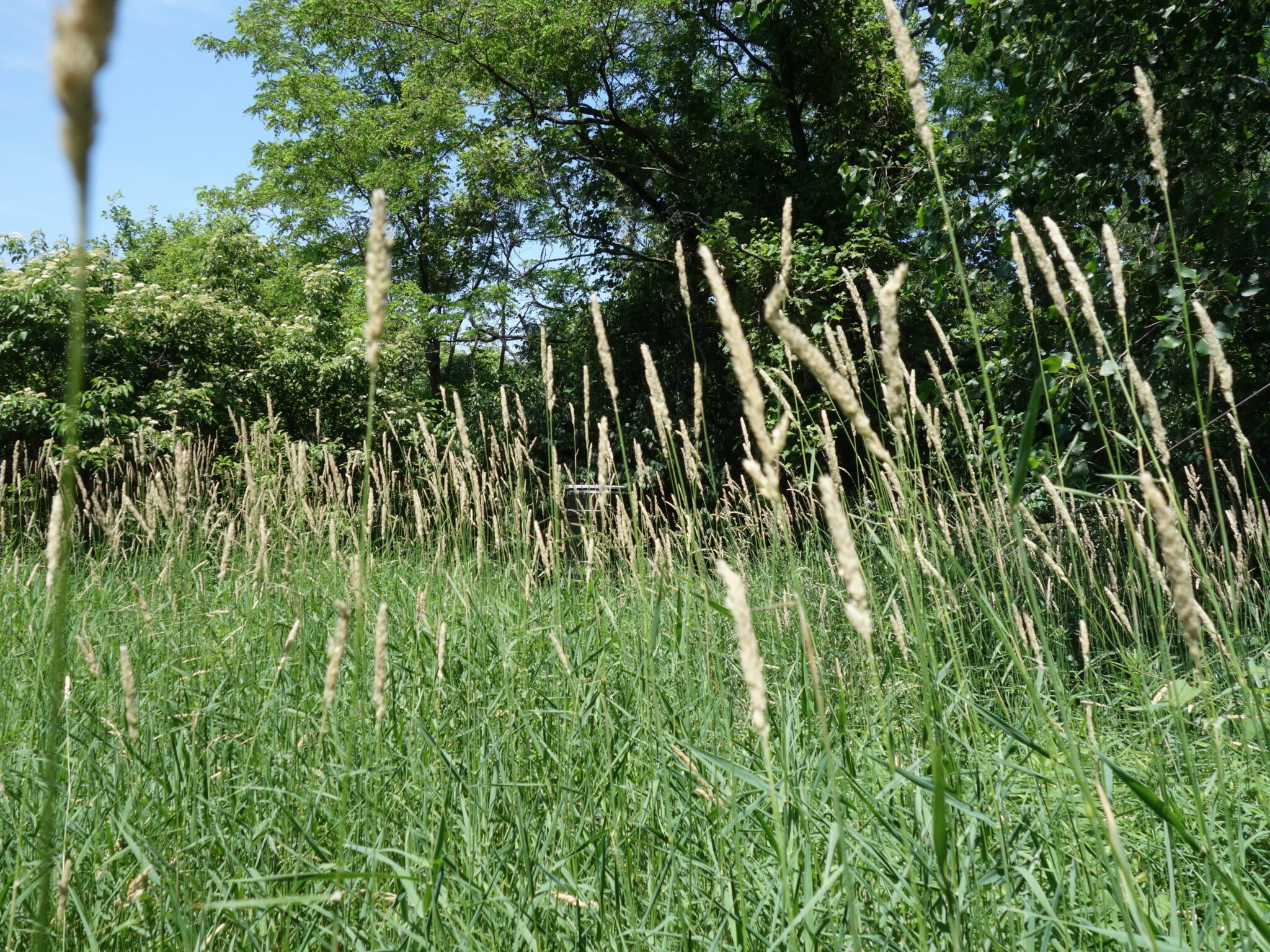
Invasive Species Awareness Week- Reed Canarygrass
March 1, 2024
Botanizing in Northeast Ohio
October 4, 2024By: Jenny Adkins
April 22, 2024
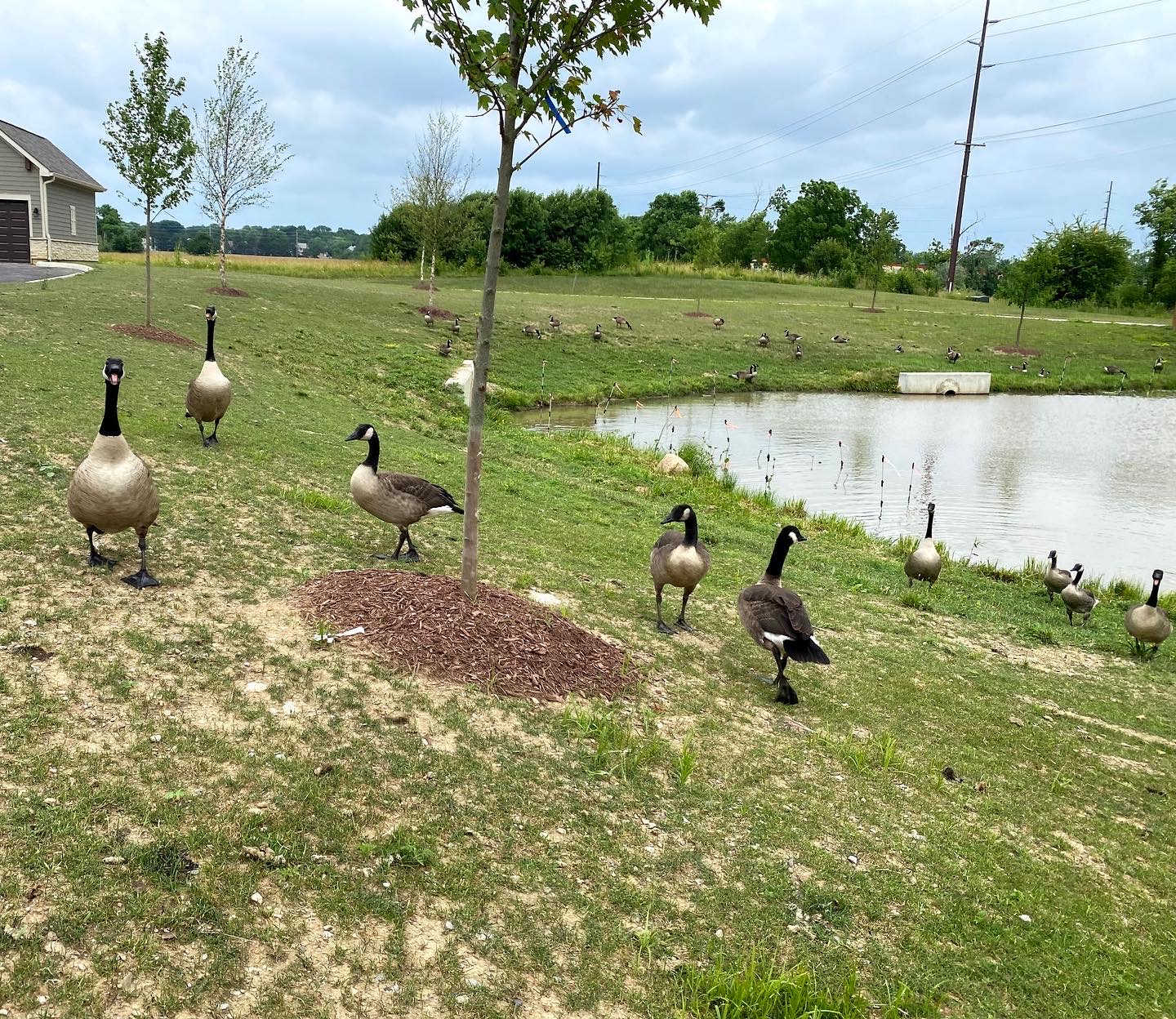
Traditional detention basin with a flock of Canada geese
We’re guessing that at first glance, most people living in suburban American areas cringe at the sight of a Canada Goose (Branta canadensis), especially if you live near a golf course, pond, or detention basin. These large, handsome geese are actively managed as nuisance species due to their aggressive behavior and, how to put this, tremendous excrement output, which dirties sidewalks and adds nutrients to water resources. As grazers, they can also impact plant establishment.
BUT, did you know that they were once on the verge of extinction? In the early 1900s, they were regularly hunted for sport and for food. Unregulated hunting accompanied with draining wetlands for farming, building, transportation routes, etc., caused their population to plummet. They were historically migratory birds, heralding the beginning of spring upon their return. In Aldo Leopold’s infamous A Sand County Almanac, a chapter is dedicated to the joyous cacophony of geese as they pause in Wisoncsin on their journey north for the summer.
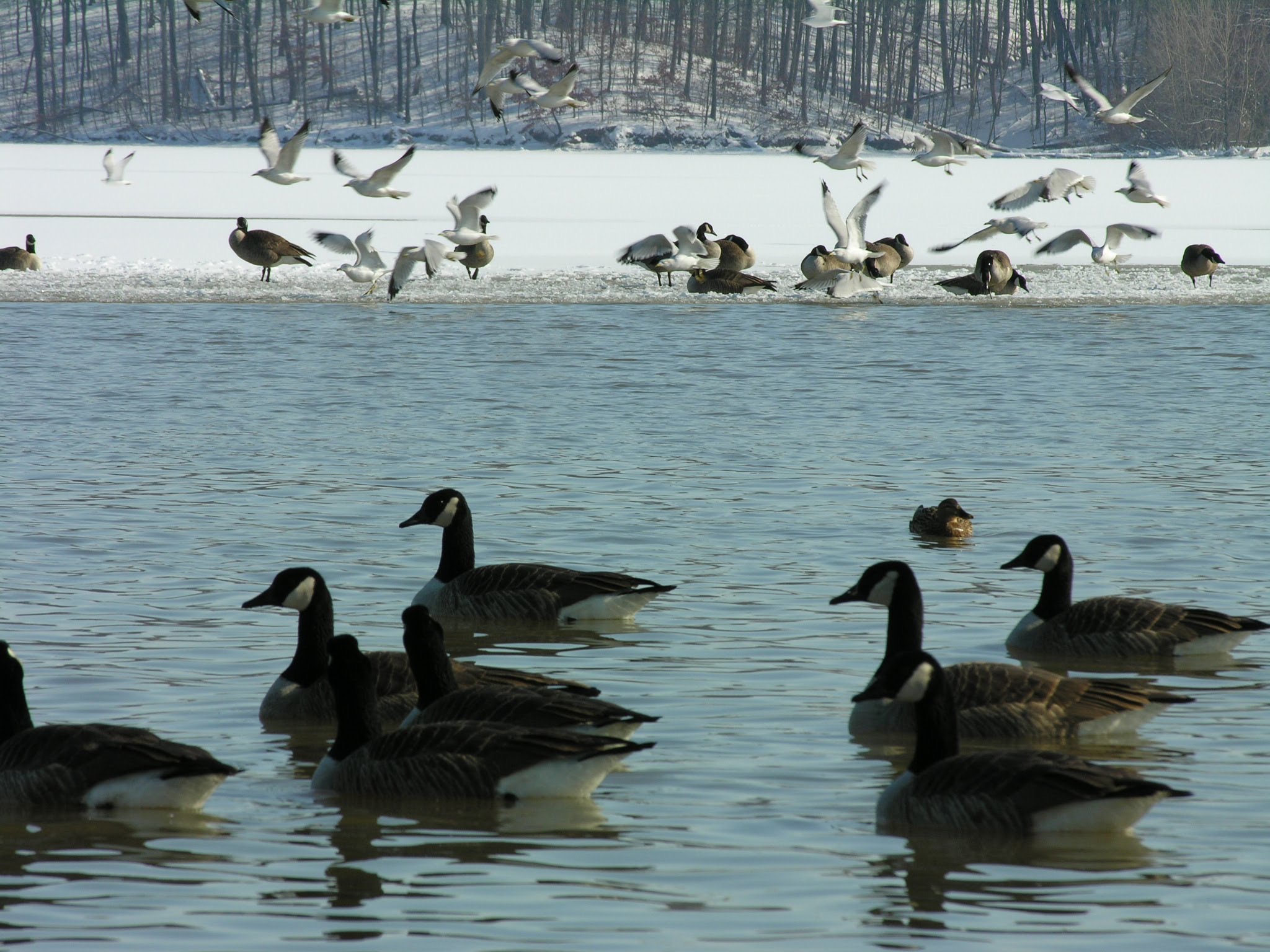
Migratory waterfowl and gulls at Hoover Reservoir.
Since the early and mid-20th century, protections such as the Migratory Bird Treaty Act and Clean Water Act, modern farming practices, and American landscaping ideals, have allowed populations to recover, tremendously. Ironically, our modern lifestyle of well-groomed lawns, open ponds absent of aquatic vegetation, and winter farmland loaded with remnant seed from fall harvests suit this bird perfectly. They love nothing more than open water free of dense vegetation that would obstruct their view (of potential predators) and their ability to leisurely stroll in and out of the water. They readily graze on turf grass in the summer and forage in fields during the winter. We’ve created a goose haven!
It’s wonderful that we were able to stabilize their population, but now we need to be smart about our relationship with them. Geese are part of our region’s fabric of life, just as we are. However, there are steps we can take to discourage them from occupying every detention pond in North America, and make these created habitats productive, habitable, hotspots for many species (that aren’t so messy).
Most importantly, let plants grow. If you’re installing a pond or stormwater management feature, consider softening the slopes, allowing the edges to fan out and blend into the local topography. This will be the sweet spot where you can add loads of native wetland plants that can add texture, color, even food to your landscape. Don’t stop there though, keep a wide buffer strip of native meadow plants that will grow tall and undoubtedly add summer color, and their roots reach deep into the soil and anchor it in place, preventing erosion (sediment/soil loss is one of the biggest pollutants in waterways today!). Mow paths through the meadow for directed access to the water. This will create a purposeful look and park-like feel. You can go further than that, add floating aquatic plants like water lily or water lotus, and trees to the edge that will provide shade to the water and their roots suck up nutrients and turn them into biomass. Cooling the water column and blocking sunlight helps prevent algal blooms. Aquatic dyes, herbicides, and other chemical treatments are marketed to mimic this effect, but they require constant input and don’t help the overall health of your pond.
You can also think of your pond as a grocery store. The more items you stock, the more “people” will come to shop. If you have a wide variety of native plants you can support all kinds of life! Certainly, you’re familiar with butterfly and moth caterpillars having preference of plants they eat. The more host plants you have, the more caterpillars you can support, which in turn feeds innumerable other species like nesting birds. Also, think about seasonality, things that grow and bloom in the spring, versus summer, versus fall. Lots of animals migrate through Ohio and are looking for specific things to eat, specific places to safely rest, specific places to mate and nest. Even in winter, native plants provide structure for hibernating amphibians, mammals, and insects, and foraging birds.
You can support all of that diversity, enjoy your yard, park, golf course, or common area, and keep flocks of geese from overstaying their welcome. It’s a win-win-win. Happy Earth Day!
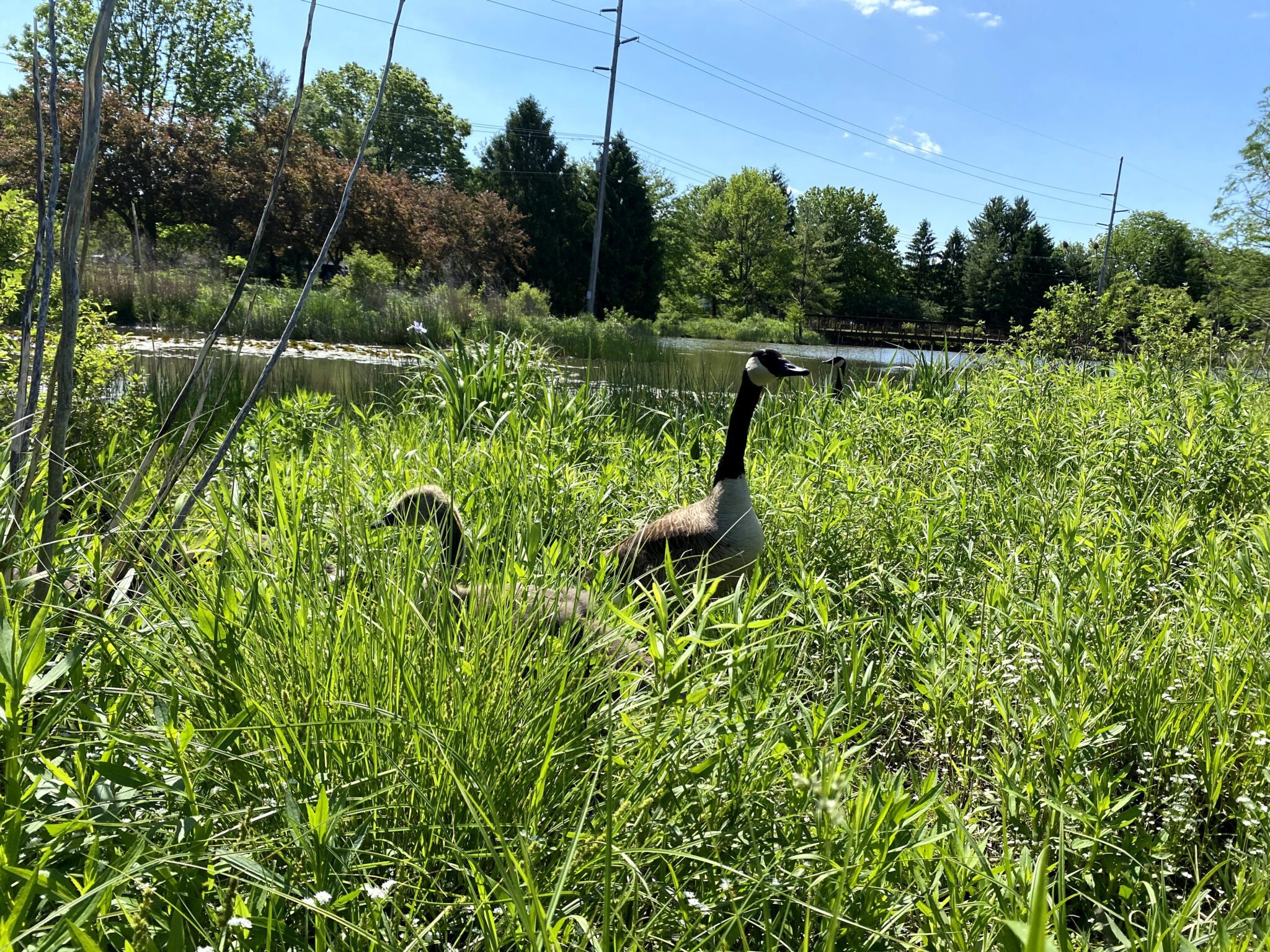
Canada goose nest and goslings.



